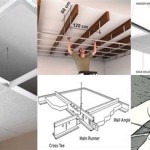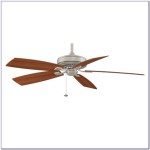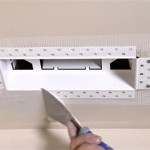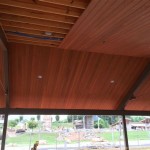How to Convert a Normal Ceiling Fan Remote Control
Standard ceiling fan remote controls offer basic functionality, typically limited to fan speed and light control. Converting a standard remote to a more advanced system can unlock features like smart home integration, scheduling, and expanded control options. This article explores the methods and considerations for enhancing a ceiling fan remote control system.
Assessing Existing Wiring and Compatibility
Before embarking on a conversion project, it is crucial to understand the existing wiring and ensure compatibility. The specific steps may vary depending on the fan and existing remote model. Examining the receiver unit located within the fan housing will reveal the wiring configuration and provide clues to compatibility with alternative remote systems.
Choosing the Right Conversion Method
Several approaches exist for converting a standard ceiling fan remote. Each method caters to different needs and technical expertise. Selecting the appropriate method depends on the desired functionality, budget, and comfort level with electrical work.
Option 1: Installing a Universal Remote Kit
Universal remote kits offer a relatively simple solution. These kits typically include a new remote and a receiver unit that replaces the existing receiver in the fan housing. The process involves carefully matching the wiring from the fan to the new receiver. Universal remotes offer an expanded set of controls compared to basic models and are often more cost-effective than other conversion methods.
Key Considerations for Universal Remote Kits:
*
Compatibility:
Verify compatibility with the existing fan motor and light kit. *Frequency:
Ensure the remote operates on a frequency that doesn't interfere with other devices. *Features:
Consider the desired features, such as dimming, multiple fan speeds, and programming options.Option 2: Integrating with a Smart Home System
Integrating a ceiling fan with a smart home ecosystem offers advanced control and automation possibilities. This method involves replacing the existing receiver with a smart receiver compatible with the chosen smart home platform. These systems often require a neutral wire connection, so verifying the presence of a neutral wire at the fan location is essential.
Key Considerations for Smart Home Integration:
*
Smart Home Platform Compatibility:
Select a receiver compatible with the existing smart home system (e.g., Amazon Alexa, Google Assistant, Apple HomeKit). *Neutral Wire:
Confirm the presence of a neutral wire in the fan's wiring. *Wi-Fi Connectivity:
Ensure a stable Wi-Fi signal reaches the fan's location. *App Functionality:
Research the app's features for scheduling, remote access, and automation capabilities.Option 3: Utilizing a Smart Switch with Remote
A smart switch with a dedicated remote offers another avenue for conversion. This approach involves replacing the existing wall switch with a smart switch and pairing it with a compatible remote. This method maintains physical wall control while adding remote functionality and potential smart home integration.
Key Considerations for Smart Switches with Remotes:
*
Wiring Compatibility:
Ensure the switch is compatible with the fan's wiring configuration. *Remote Compatibility:
Confirm the remote and switch are designed to work together. *Smart Home Integration (Optional):
Consider whether the smart switch integrates with a desired smart home platform.Installation Best Practices
Regardless of the chosen conversion method, adherence to safe wiring practices is paramount. Disconnecting the power supply at the breaker box before any wiring modifications is crucial. Following the manufacturer's instructions meticulously for both the existing fan and the new components is critical for proper operation and safety. If unsure about any aspect of the installation, seeking professional electrical assistance is recommended.
Troubleshooting Common Issues
Occasionally, issues may arise during or after the conversion process. Understanding common problems and their solutions can facilitate a smoother experience. Consulting the manufacturer's documentation or seeking online resources can often resolve these issues.
Examples of Common Issues:
*
Remote Not Responding:
Check battery placement, pairing process, and remote frequency. *Fan Not Operating Correctly:
Verify wiring connections and compatibility between components. *Light Flickering:
Ensure proper bulb wattage and compatibility with the dimming capabilities (if applicable).Maintaining the Converted System
Once the conversion is complete, regular maintenance ensures continued optimal performance. Regularly checking and replacing remote batteries, cleaning the fan blades, and periodically inspecting the wiring connections contribute to the longevity of the system. Adhering to the manufacturer's recommended maintenance schedule for both the fan and the converted remote system will ensure reliable and efficient operation.

Converting An Existing Ceiling Fan To A Remote Control

न र मल स ल ग फ क म ट चल ओ How To Make Remote Control For Fan Ceiling

क ई भ फ न चल ओ र म ट स How To Make Remote Control Fan Normal Into

Converting An Existing Ceiling Fan To A Remote Control

Lripl Lf01 01 Ir Fan Controller For Converting Normal Ceiling To R

क ई भ फ न चल ओ र म ट स How To Make Remote Control Fan Normal Into

How To Wire A Ceiling Fan Control Using Dimmer Switch

Remote Controlled Ceiling Fan Regulator Circuit Homemade Projects

How To Convert A Ceiling Fan Fully Remote Controlled

Converting An Existing Ceiling Fan To A Remote Control
Related Posts








